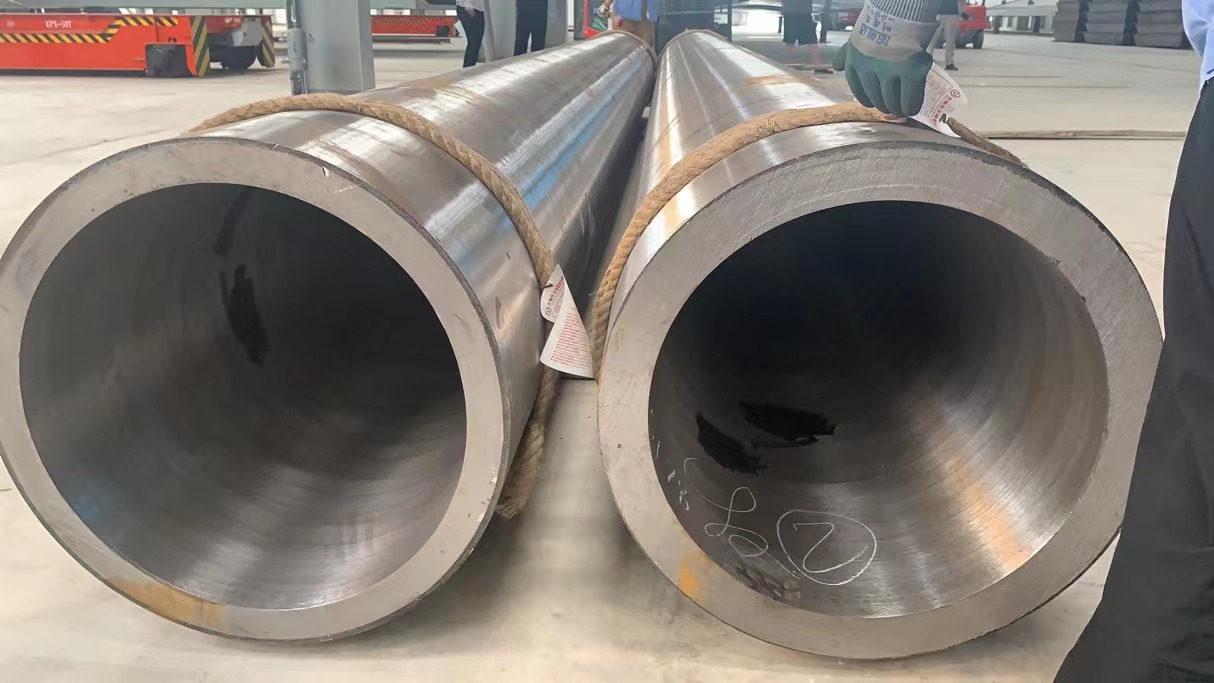Янв . 16, 2024 12:18 Тізімге оралу
how are steel tubes made-Welded Steel Pipe
Болат құбыр және болат құбыр тереңдікте болат құбыр
Болат құбыр (және болат құбыр) тарихта дамыды. Атап айтқанда, металл түтік шамамен б.з.б. 3000 жылдан бері бар. Шын мәнінде, мысырлықтар мыстан жасалған алғашқы металл құбырды жасады.
Біздің эрамызға дейінгі 2500 жылдың басында қытайлықтар газды тасымалдау үшін бамбук құбырын пайдаланды
As early as 2500 BC, Chinese used bamboo pipe as a way to transport natural gas to light Peking, their capital. Rome and Persia created aqueducts to bring water to city centers for bathing, washing and drinking.
Сонымен қатар, құбыр (немесе түтік) әртүрлі материалдар мен әдістермен жасалады. Шұңқырлы тас, күйдірілген саз, бамбук, пальма, қызыл ағаш, қорғасын, қола, мыс және резеңке түтіктерді жасайтын материалдардың кейбірі ғана.
In the mid-1800’s the modern steel industry was bolstered with the Bessemer process. The Bessemer process represented the first inexpensive method for mass production of steel pipe. Subsequently, seamless tube was born in 1895. Quickly followed by manufacturing of auto, bicycle, and machinery for oil production which began in full force.
It was not long after, that efficiencies in manufacturing lowered prices and steel pipe and tubes became common. Presently, there are many different types of Steel Tube and Steel Pipe being manufactured. Depending on the application, J524 Seamless Hydraulic Tubing, J525 Welded Hydraulic Tube, and many other specialty steel tubing and piping are available.
To better understand steel tubing, let’s explore the differences between steel tube and steel pipe. Most would think that both are the same. Though there are many distinctions between them, i.e. standards, measurements, uses, and applications.
Механикалық түтік
Түтік пен құбыр салыстырылды
Firstly, there IS a difference between a steel tube and steel pipe. It’s NOT just about semantics. The basic distinction is their common uses, measurement, and terminology. Let’s take a look..
Болат түтік
Түтік, жалпы айтқанда, кішігірім қолданбаларға арналған, яғни гидравлика, отын желілері және т.б.
RIZE: And regardless of its material, steel tube is measured by its actual outside diameter (OD). For instance, the diameter of a 1 ¼” tube is a true 1.25″, while a 1 ¼” pipe is 1.625″. The қабырға қалыңдығы жіңішке құбырлар габаритпен өлшенеді, ал қалыңырақ құбырлар фракциялармен немесе миллиметрмен өлшенеді. Дегенмен, бұл құбыр үшін дұрыс емес. A pipe’s wall thickness is referred to as “Schedule” specified by ASME B36.10. ЕСКЕРТУ: There is no set formula between a pipe’s Schedule and its wall thickness. One needs to refer to ASME B36.10 for relevant standards.
МАТЕРИАЛ: Көбінесе жұмсақ болаттан, алюминийден, жезден, мыстан, хромнан немесе тот баспайтын болаттан жасалады.
БІРІСУ/ДӘНЕНЕЛЕТУ: Түтіктер дәнекерлеу, жағу немесе муфталар сияқты басқа механикалық құралдармен біріктіріледі.
МЕХАНИКАЛЫҚ/ХИМИЯЛЫҚ ҚАСИЕТТЕРІ: Steel tube chemical properties are very important for quality and process. Therefore, its microelements such as chemical composition are crucial. In addition, mechanical properties such as tensile, yield strength, and elongation are specified depending on its application.
Болат құбыр
Құбыр әдетте үлкенірек қолданбалар үшін қолданылады, яғни мұнай және газ тасымалдау желілері, мұнай өңдеу зауыттары және құрылымдық.
Chicago Distribution Center and Warehouse – Steel Pipe and Steel Tube
RIZE: For instance, steel pipe diameter is indicated by its “Номиналды” thickness and NOT actual thickness. In other words, “Nominal” or NPS is a non-dimensional number referring to the diameter of a pipe’s hole. Құбырлардың стандартты кестелері мен өлшемдері are specified differently than tubing. Piping is identified by its diameter with another non-dimensional measurement for its wall thickness (Schedule). For example, a 2″ (2.375-inch) diameter pipe that has Schedule 40 has a wall thickness of 0.154″. Whereas, a 1″ diameter Schedule 40 pipe actual wall thickness is 0.133″. OD’s (Outside Diameter) of pipe remains the same regardless of its Schedule.
МАТЕРИАЛ: Көбінесе көміртекті болаттан және/немесе төмен легирленген болаттан жасалады.
БІРІСУ/ДӘНЕНЕЛЕТУ: Болат құбырды біріктіру өте еңбекті қажет етеді. Дәнекерлеу, қысыммен біріктіру, фланецтер және бұрандалы құбырларды біріктірудің негізгі әдістері.
МЕХАНИКАЛЫҚ/ХИМИЯЛЫҚ ҚАСИЕТТЕРІ: The chemical elements of steel pipe, i.e. Carbon, Manganese, Silicon, Sulfur, and Phosphorus are its main components., However, unlike a steel tube, few microelements in steel pipe are required. Instead, a steel pipe’s pressure rating, ductibility, and yield strength are most important.
Түтіктер мен құбырларға төзімділік
Қолдану талаптарына байланысты құбырдың қысым қасиеттері мен басқа да техникалық сипаттамалары қатаң түрде көрсетілген. Дегенмен, құбырға арналған рұқсаттар түтікке қарағанда бос. Соңғысы диаметрге, қабырға қалыңдығына, дөңгелектікке және түзуге қатысты төзімділікке тән.
Өндіріс мәселелері
As stated previously, tube and pipe have unique use requirements. Steel tubing is used in more precision applications than pipe. Therefore, pipe manufacture costs less to manufacture due to fewer precision requirements. While tubing requires more use capabilities and narrower tolerances, raising its manufacture costs.
Applications
Tubing is well-suited for applications such as medical, weaponry, machinery parts, boiler tubes, and exchanger which require precise outside diameters and other measurement requirements. While steel pipe is used to carry large amounts of gas and fluids, their OD (Outside Diameter) and ID (Inside Diameter) determine the flow rate and pressure capabilities. However, tolerances for pipe is typically less demanding.
-
Carbon Steel Tube Pressure Rating-steel pie
ЖаңалықтарJan.16,2024
-
Stainless steel-Electric Resistance Welded (ERW) Pipe-Welded (ERW) Pipe
ЖаңалықтарJan.16,2024
-
High Frequency Electric Weld (ERW) Line Pipe and Standard Products-ERW Steel Pipe
ЖаңалықтарJan.16,2024
-
Болат құбырлар қалай жасалады?-Болат құбырлар
ЖаңалықтарJan.16,2024
-
Structural steel Pipe-ERW Steel Pipe
ЖаңалықтарJan.16,2024
-
Methods of Manufacturing used in the Metal Pipe and Tubing Industries-ERW Steel Pipe
ЖаңалықтарJan.16,2024
